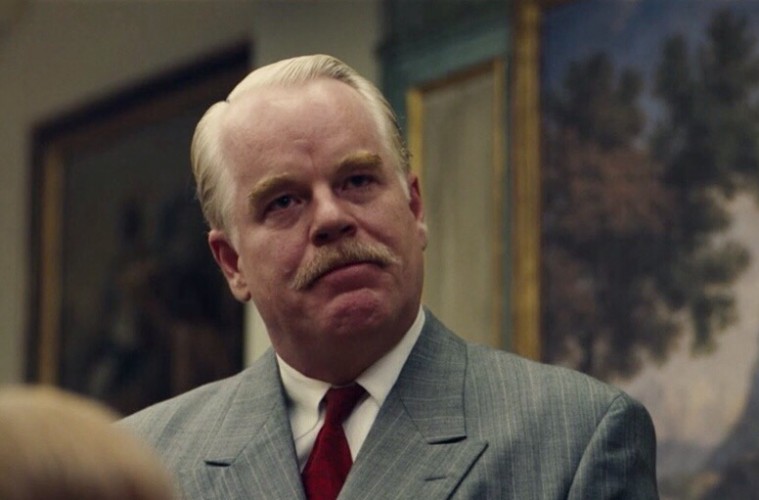Focusing on the first half of the decade (2010-2015).
By Andrew Allen
So the time has come (and nearly passed) when professional and amateur film critics, and some filmmakers, release their end-of-year “best of 2014” list. When we all arbitrarily list our personal favorites movies of the past twelve months typically under the pretense of some form of “objectivity”. It’s nonsense, but it’s fun nonsense. And as vapid as lists tend to be, there is a time and place for everything, and a brand new year seems like one of those times/places.
Now, instead of taking on only my twenty-fourteen favorites, I figured I’d indulge in something quite a few publications have overlooked; we are halfway through the current decade. Meaning that we’ve had five solid years of movies to look back on in the twenty-ten’s. So, in honor of the latter half of the decade, I present to you Viewfinder’s Top Fifteen Films of the Decade (so far).
#15. Gravity (2013)
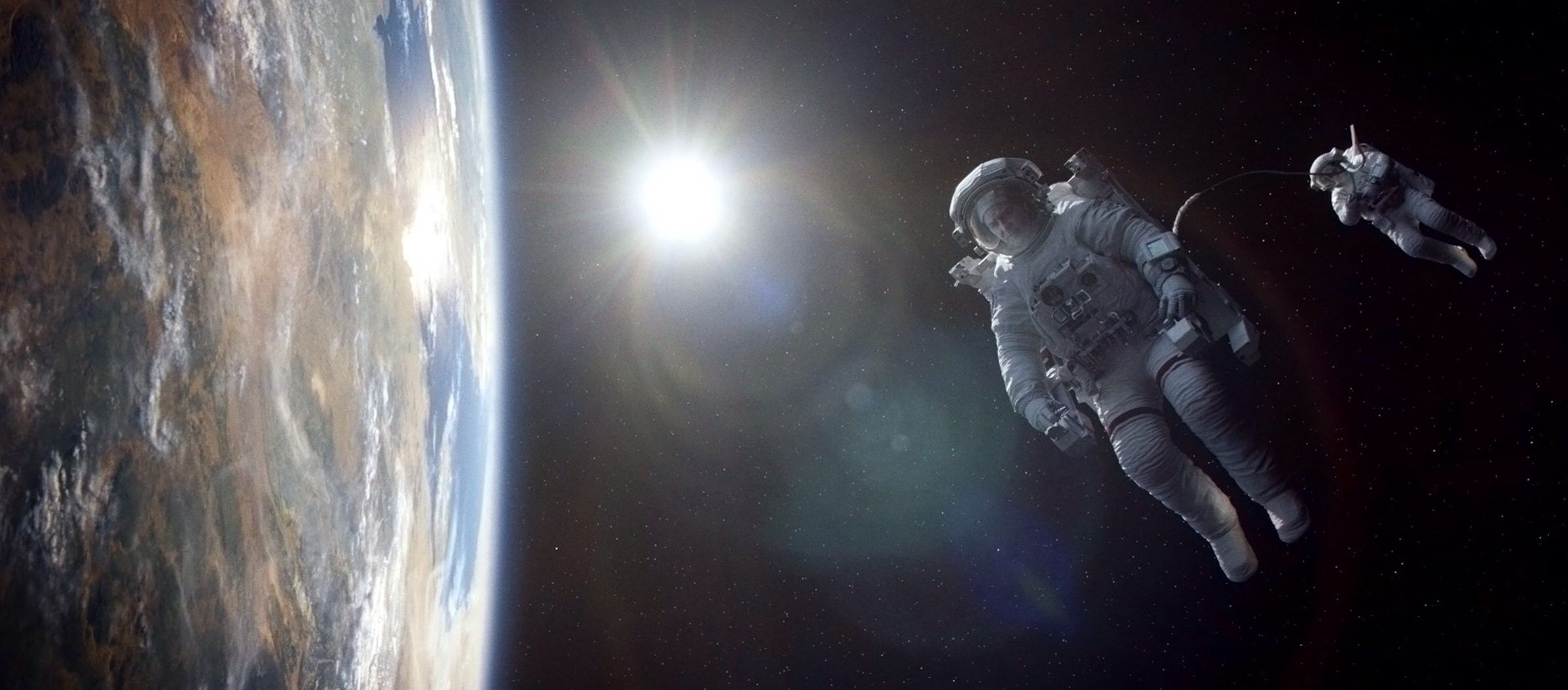 Alfonso Cauron’s space-survival epic is possibly the most thoroughly engrossing and enveloping theatrical experience of the decade. With a seamless blend of performance and state-of-the-art green screen effects, Gravity is every bit as much an emotional journey as it is a visual experience. The premise is simple: an astronaut stranded in space must find her way back down to earth. But the fight to survive against being lost forever in the void will take every ounce of her mental and physical strength, a trial that will test and ultimately transform her. From beginning to end, Gravity is a heart-pounding cinematic vision, and one of the only movies ever made that today’s brilliant home viewing set ups cannot fully replicate in it’s true grandeur. It successfully makes the case for the future of in-theater viewing over home viewing that Christopher Nolan couldn’t quite stick a year later in Interstellar. The difference between the two being Cauron’s willingness to embrace and push the limits of current technology to create something audiences had truly never seen before, and may not see again for a good long time.
Alfonso Cauron’s space-survival epic is possibly the most thoroughly engrossing and enveloping theatrical experience of the decade. With a seamless blend of performance and state-of-the-art green screen effects, Gravity is every bit as much an emotional journey as it is a visual experience. The premise is simple: an astronaut stranded in space must find her way back down to earth. But the fight to survive against being lost forever in the void will take every ounce of her mental and physical strength, a trial that will test and ultimately transform her. From beginning to end, Gravity is a heart-pounding cinematic vision, and one of the only movies ever made that today’s brilliant home viewing set ups cannot fully replicate in it’s true grandeur. It successfully makes the case for the future of in-theater viewing over home viewing that Christopher Nolan couldn’t quite stick a year later in Interstellar. The difference between the two being Cauron’s willingness to embrace and push the limits of current technology to create something audiences had truly never seen before, and may not see again for a good long time.
#14. Frances Ha (2012)
 A humorous exploration of the journey (or lack thereof) from childhood to adulthood is brought to life in this charming and vivid portrait by Noah Baumbach of today’s generation of seemingly directionless twenty-somethings. Though never relenting from finding amusement in the oftentimes ridiculous antics of it’s heroine, Frances Ha is never a cynical film. A tour through the scatter-brained, completely unselfaware mind of an aspiring young somebody as the stumbles her way through a life she simply can’t keep up with, a reality she never seems to truly resign herself to. It’s always amusing and, at times, a quite poignant take on trying to fit in a world that doesn’t seem to have any more room for you. Baumbach’s willingness to observe without judgment or over-indulgent sympathy makes Frances Ha an entirely different beast from the typical indie fair revolving around the modern twenty-something. He takes a character and story that could be taxing and insufferable under another director and allows it to speak on its own terms and endear itself in its own natural manner. The results are wonderful.
A humorous exploration of the journey (or lack thereof) from childhood to adulthood is brought to life in this charming and vivid portrait by Noah Baumbach of today’s generation of seemingly directionless twenty-somethings. Though never relenting from finding amusement in the oftentimes ridiculous antics of it’s heroine, Frances Ha is never a cynical film. A tour through the scatter-brained, completely unselfaware mind of an aspiring young somebody as the stumbles her way through a life she simply can’t keep up with, a reality she never seems to truly resign herself to. It’s always amusing and, at times, a quite poignant take on trying to fit in a world that doesn’t seem to have any more room for you. Baumbach’s willingness to observe without judgment or over-indulgent sympathy makes Frances Ha an entirely different beast from the typical indie fair revolving around the modern twenty-something. He takes a character and story that could be taxing and insufferable under another director and allows it to speak on its own terms and endear itself in its own natural manner. The results are wonderful.
#13. The One I Love (2014)
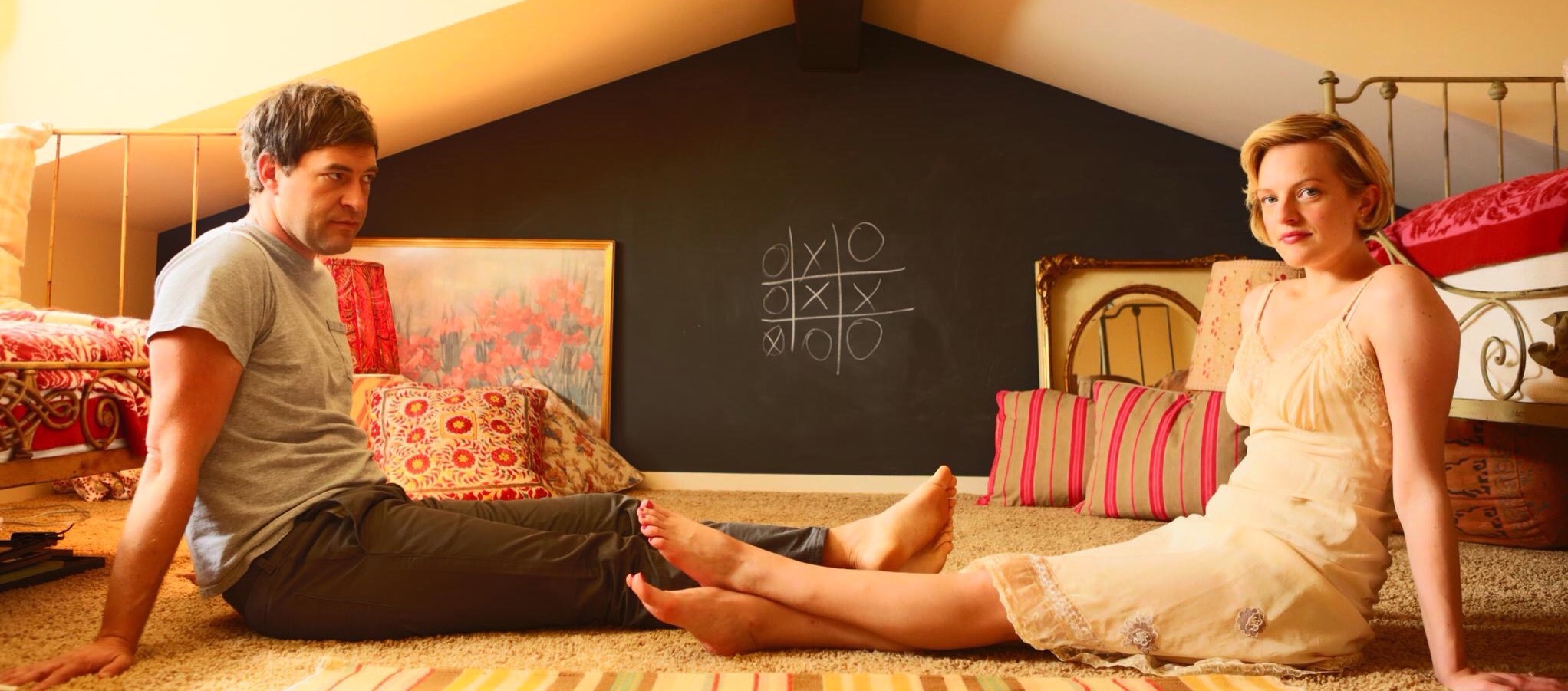 This offbeat romantic drama/sci-fi concept thriller is easily one of the strangest yet most uniquely wonderful indie films to come out this century. Anchored by two excellent performances from Elizabeth Moss and Mark Duplass, the film dives headlong into the twilight zone and yet emerges with a pointed series of observations concerning love and the modern relationship. It’s fearlessness allows it to dive under the skin of the issues it tackles, really digging deep beneath the surface to hit truths that the average melancholy indie romance never really approaches. Suffice to say, it stands tall as an example of independent high concept filmmaking done right, never once giving off the feeling that the people behind the camera were at a loss or in over their heads. Confident, sleek and smart, The One I Love is the perfect skewering of cinematic romance in today’s cynical world.
This offbeat romantic drama/sci-fi concept thriller is easily one of the strangest yet most uniquely wonderful indie films to come out this century. Anchored by two excellent performances from Elizabeth Moss and Mark Duplass, the film dives headlong into the twilight zone and yet emerges with a pointed series of observations concerning love and the modern relationship. It’s fearlessness allows it to dive under the skin of the issues it tackles, really digging deep beneath the surface to hit truths that the average melancholy indie romance never really approaches. Suffice to say, it stands tall as an example of independent high concept filmmaking done right, never once giving off the feeling that the people behind the camera were at a loss or in over their heads. Confident, sleek and smart, The One I Love is the perfect skewering of cinematic romance in today’s cynical world.
#12. The Master (2012)
 Paul Thomas Anderson’s ability to showcase performers it legendary, and has been for some time. His willingness to hold a scene for as long as necessary, to drain every ounce of dramatic potential from it is unparalleled. He achieves a level of intensity in five minutes that it would take another director two hours to properly build. And he has never been in finer form than in The Master. Grounded by the incredible talents of Joaquin Phoenix, the late, great Philip Seymour Hoffman, and Amy Adams, The Master is a character study like no other. Almost unconcerned with plot points, the story is still riveted, maintaining its power through raw character alone. Anderson’s maintained use of film over digital shooting is also at its most potent here, drawing rich textured colors and depth of imagery that gives each shot the feeling of being a painting. As it currently stands, Anderson may be the only filmmaker today still actively proving the continued worth of film, the only remaining master of celluloid. As a personal fan of digital, I cannot personally emphasize enough just how much respect his visual sensibilities have earned, The Master being the greatest testament to his particular talent.
Paul Thomas Anderson’s ability to showcase performers it legendary, and has been for some time. His willingness to hold a scene for as long as necessary, to drain every ounce of dramatic potential from it is unparalleled. He achieves a level of intensity in five minutes that it would take another director two hours to properly build. And he has never been in finer form than in The Master. Grounded by the incredible talents of Joaquin Phoenix, the late, great Philip Seymour Hoffman, and Amy Adams, The Master is a character study like no other. Almost unconcerned with plot points, the story is still riveted, maintaining its power through raw character alone. Anderson’s maintained use of film over digital shooting is also at its most potent here, drawing rich textured colors and depth of imagery that gives each shot the feeling of being a painting. As it currently stands, Anderson may be the only filmmaker today still actively proving the continued worth of film, the only remaining master of celluloid. As a personal fan of digital, I cannot personally emphasize enough just how much respect his visual sensibilities have earned, The Master being the greatest testament to his particular talent.
#11. Inception (2010)
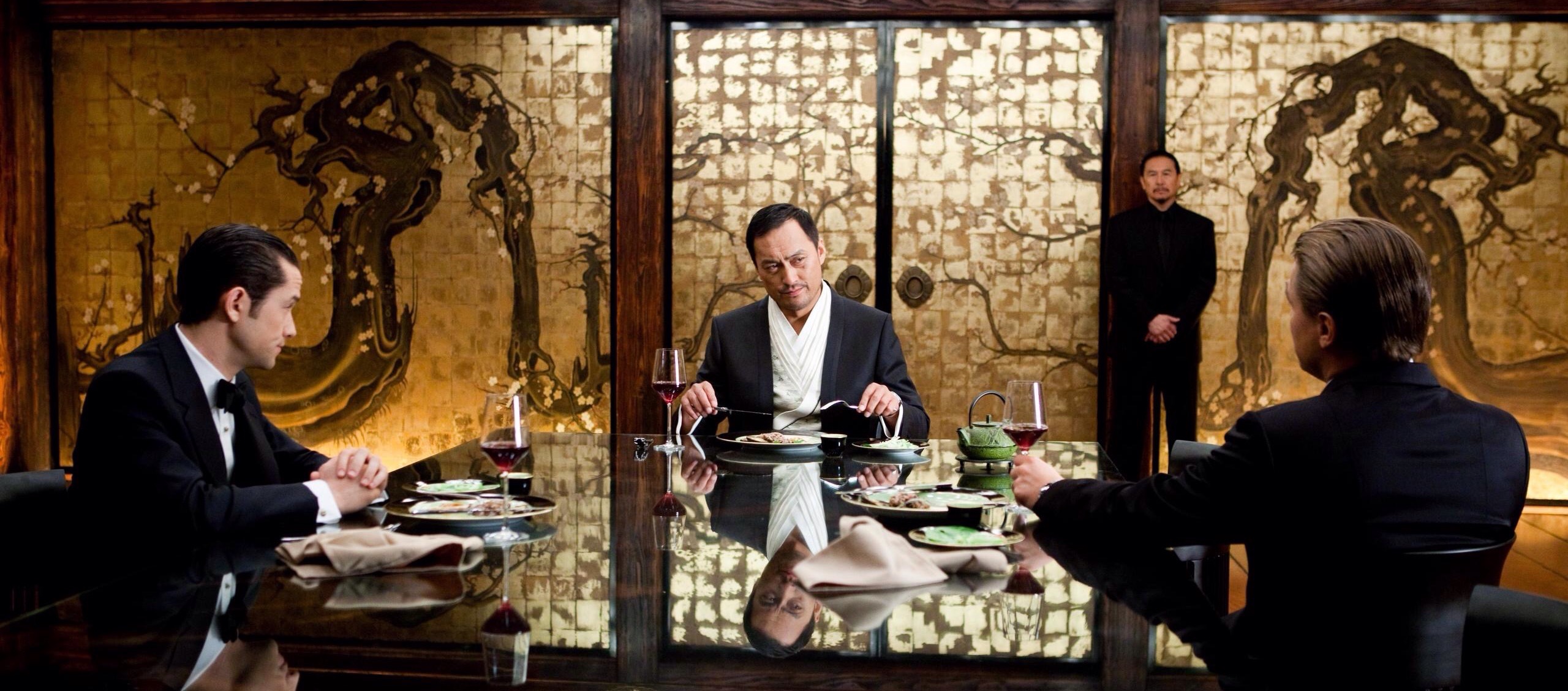 In the year’s since he gained widespread notoriety for The Dark Knight, Christopher Nolan has become known as the champion of the cerebral blockbuster. His movies are big, serious and brainy, sometimes for the better and sometimes for the worse. The “better” example this decade being his 2010 mind-bender Inception, a sort of sci-fi James Bond adventure through the human mind itself. It’s in this film that all of Nolan’s best attributes as a filmmaker come together seamlessly, for a massive thriller epic that entertains just as thoroughly as it provokes thought on the part of the viewer. It is also a film where Nolan’s grandiose emotional sweeps (to the exclusion of general intimacy) serves the story and elevates it rather than hinders it. In many ways, Inception harkens back to the suit-clad thrillers of Hitchcock, a complex, self contained, high-tension roller coaster ride of a thriller. It’s Nolan’s lean, mean brain-****ing machine, and it endures as one of his best.
In the year’s since he gained widespread notoriety for The Dark Knight, Christopher Nolan has become known as the champion of the cerebral blockbuster. His movies are big, serious and brainy, sometimes for the better and sometimes for the worse. The “better” example this decade being his 2010 mind-bender Inception, a sort of sci-fi James Bond adventure through the human mind itself. It’s in this film that all of Nolan’s best attributes as a filmmaker come together seamlessly, for a massive thriller epic that entertains just as thoroughly as it provokes thought on the part of the viewer. It is also a film where Nolan’s grandiose emotional sweeps (to the exclusion of general intimacy) serves the story and elevates it rather than hinders it. In many ways, Inception harkens back to the suit-clad thrillers of Hitchcock, a complex, self contained, high-tension roller coaster ride of a thriller. It’s Nolan’s lean, mean brain-****ing machine, and it endures as one of his best.
#10. Blue is the Warmest Color (2013)
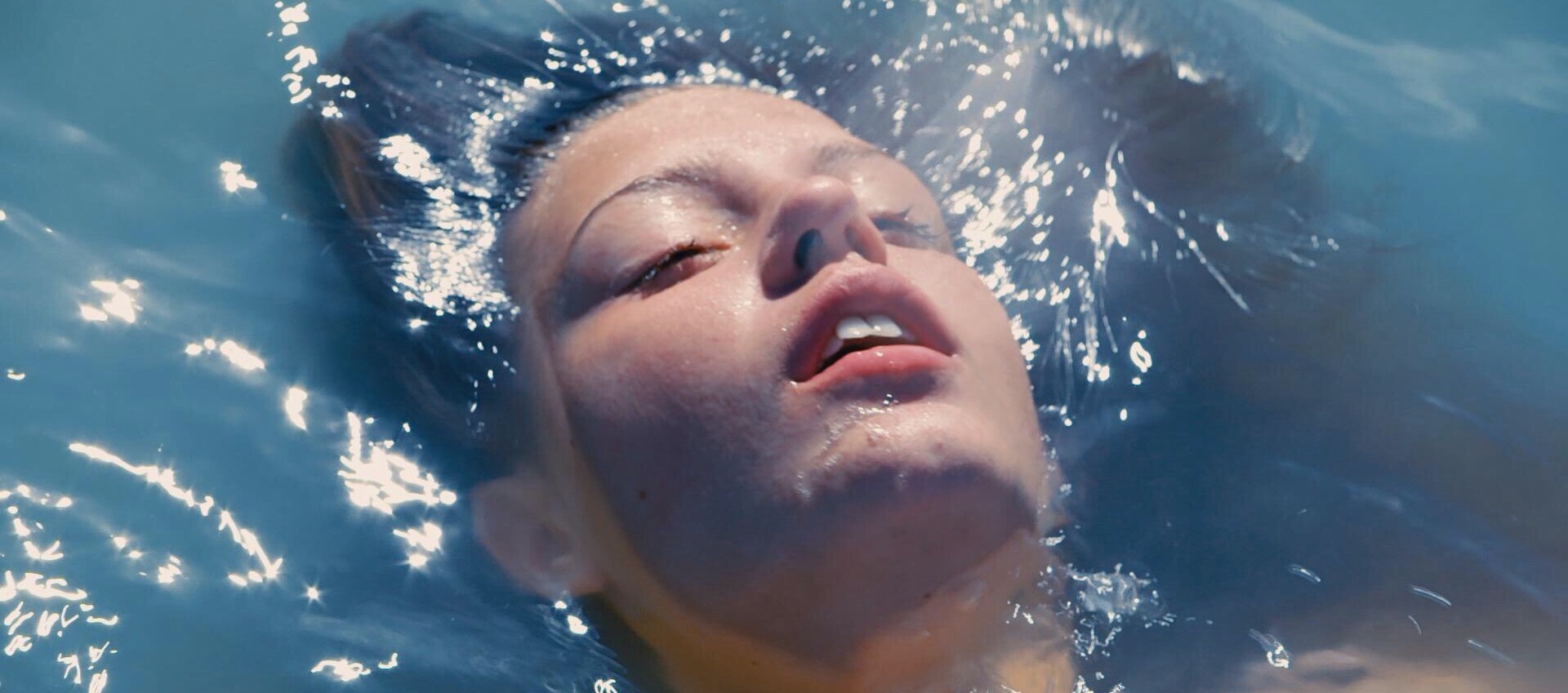 One of the best romantic films of the decade (thus far) appropriately hails from the world of French cinema. Abdellatif Kechiche’s Blue is the Warmest Color (known in france as The Life of Adele – Chapters 1 & 2) follows the initial romance and continuing relationship of two young French women, Adele (Adele Exarchopoulos) and Emma (Lea Seydoux). Experienced through the youthful, oftentimes naive eyes of Adele, Blue is an open-hearted, brutally sincere journey through the first love of youth. Kechiche’s quest to draw the rawest, most emotionally unfiltered performances from his actresses has proven controversial (for apparently good reason), but the results are stunning and powerful none the less. Though perhaps most well known for it’s sexual content, the ultimate lasting effect of Blue is it’s emotional nakedness rather than any of it’s onscreen nudity (of which there is much). It’s a stunning emotional journey that cuts deep into the flaws and the trials of it’s young protagonist, seen through the lens of a talented and in-tuned director who maximizes every moment of vulnerability with impactful gravitas.
One of the best romantic films of the decade (thus far) appropriately hails from the world of French cinema. Abdellatif Kechiche’s Blue is the Warmest Color (known in france as The Life of Adele – Chapters 1 & 2) follows the initial romance and continuing relationship of two young French women, Adele (Adele Exarchopoulos) and Emma (Lea Seydoux). Experienced through the youthful, oftentimes naive eyes of Adele, Blue is an open-hearted, brutally sincere journey through the first love of youth. Kechiche’s quest to draw the rawest, most emotionally unfiltered performances from his actresses has proven controversial (for apparently good reason), but the results are stunning and powerful none the less. Though perhaps most well known for it’s sexual content, the ultimate lasting effect of Blue is it’s emotional nakedness rather than any of it’s onscreen nudity (of which there is much). It’s a stunning emotional journey that cuts deep into the flaws and the trials of it’s young protagonist, seen through the lens of a talented and in-tuned director who maximizes every moment of vulnerability with impactful gravitas.
#9. Moonrise Kingdom (2012)
 With Wes Anderson’s rise to a new level of fame this past year with The Grand Budapest Hotel, it becomes easy to overlook his earlier (and, in my opinion, occasionally better) work on films such as Moonrise Kingdom. Of all his films, one could argue that Moonrise is the most Wes Andersonian of all Wes Anderson movies; quaint locales, parental drama, a plethora knitted outfits. One could also argue that it’s in this film that Wes finally perfects his approach to these themes, the story ringing more poignantly and sincerely than ever before. Anderson’s always top-notch production design is at it’s pinnacle here, seamlessly blending his nostalgic vision of 1960’s New England with dramatic, verging on fantastical imagery. It’s whip-smart dialogue, impeccable visual sense and impressive array of actors may not necessarily make Moonrise Anderson’s best ever, but it probably makes it the most representative of him as a filmmaker. And that is in no way a bad thing.
With Wes Anderson’s rise to a new level of fame this past year with The Grand Budapest Hotel, it becomes easy to overlook his earlier (and, in my opinion, occasionally better) work on films such as Moonrise Kingdom. Of all his films, one could argue that Moonrise is the most Wes Andersonian of all Wes Anderson movies; quaint locales, parental drama, a plethora knitted outfits. One could also argue that it’s in this film that Wes finally perfects his approach to these themes, the story ringing more poignantly and sincerely than ever before. Anderson’s always top-notch production design is at it’s pinnacle here, seamlessly blending his nostalgic vision of 1960’s New England with dramatic, verging on fantastical imagery. It’s whip-smart dialogue, impeccable visual sense and impressive array of actors may not necessarily make Moonrise Anderson’s best ever, but it probably makes it the most representative of him as a filmmaker. And that is in no way a bad thing.
#8. Submarine (2010)
 Irritating, egocentric adolescents are a tough subject to make a movie about. Why? Because they’re just generally some of the least likeable sorts of people. There’s something about being old enough to be smart, but young enough to still not understand that the world does not revolve around oneself that makes for the most dislikable of combinations in a human being. So, how do you make a movie where the central character fits well within that description? You make it a comedy. Now this is hardly a new formula, plenty of films have been constructed to mock their dislikable central character. But what director Richard Ayoade does differently that makes his film Submarine different, is that the humor is never aloof or insulting. Rather, the film is empathetic to it’s dumb, young subject, but still finds a removed, rather existential humor in the ridiculousness of his persona. It’s a hard balance to strike, but Ayoade does it masterfully, endearing the young Oliver (Craig Roberts) while never losing sight of the reality that he is, for all intents and purposes, not a likeable sort of person. It’s insightfully melancholy and hilarious in turns, but always at least one (oftentimes both), and the story’s Welsh setting provides it a unique sort of flavor that leaves a lasting impact.
Irritating, egocentric adolescents are a tough subject to make a movie about. Why? Because they’re just generally some of the least likeable sorts of people. There’s something about being old enough to be smart, but young enough to still not understand that the world does not revolve around oneself that makes for the most dislikable of combinations in a human being. So, how do you make a movie where the central character fits well within that description? You make it a comedy. Now this is hardly a new formula, plenty of films have been constructed to mock their dislikable central character. But what director Richard Ayoade does differently that makes his film Submarine different, is that the humor is never aloof or insulting. Rather, the film is empathetic to it’s dumb, young subject, but still finds a removed, rather existential humor in the ridiculousness of his persona. It’s a hard balance to strike, but Ayoade does it masterfully, endearing the young Oliver (Craig Roberts) while never losing sight of the reality that he is, for all intents and purposes, not a likeable sort of person. It’s insightfully melancholy and hilarious in turns, but always at least one (oftentimes both), and the story’s Welsh setting provides it a unique sort of flavor that leaves a lasting impact.
#7. Noah (2014)
 For all intents and purposes, Darren Aronofsky’s biblical epic, Noah, is the most daring, uncompromising big-budget blockbuster of the decade, if not the past two decades. It’s the spirit of a challenging, existentially contemplative independent film miraculously transposed into the grandeur of a high fantasy epic, rivalling The Lord of the Rings in it’s ability to use it’s budget to conjure striking, timeless imagery. It’s willingness to play with and mold the fairly thin religious tale of Noah and the Flood ultimately makes Noah a more spiritually faithful film than the traditional biblical epics before it. The scriptures of holy books can be some of the darkest places in literature. Challenging, confusing, sometimes even scary. And for people of faith (such as myself), the temptation can often be to flee to the most comforting, the most simple understanding of the tales found in religious texts. But Aronofsky’s vision for Noah defies this at every turn. Mining the Noah story for hard questions and philosophical challenges bound to make the anti-intellectual squirm in their seat. Aronofsky’s ability to weave dark, unflinching dramatic beats with epic battle sequences and visually stunning recreations of age-old religious imagery only elevates the material’s power in every respect. It’s intimate, it’s epic, it’s challenging, and it’s inspiring, taking the intellectually challenging route at each and every turn. Noah is the movie that the original Bible story has always deserved, and it’s the bucket of cold water the stagnant religious traditionalist crowd needed dumped on them. It’s an incredible, but somehow logical irony that it took a non-believer to create a Bible film that paints a truer, more honest image of God than any that had come before it.
For all intents and purposes, Darren Aronofsky’s biblical epic, Noah, is the most daring, uncompromising big-budget blockbuster of the decade, if not the past two decades. It’s the spirit of a challenging, existentially contemplative independent film miraculously transposed into the grandeur of a high fantasy epic, rivalling The Lord of the Rings in it’s ability to use it’s budget to conjure striking, timeless imagery. It’s willingness to play with and mold the fairly thin religious tale of Noah and the Flood ultimately makes Noah a more spiritually faithful film than the traditional biblical epics before it. The scriptures of holy books can be some of the darkest places in literature. Challenging, confusing, sometimes even scary. And for people of faith (such as myself), the temptation can often be to flee to the most comforting, the most simple understanding of the tales found in religious texts. But Aronofsky’s vision for Noah defies this at every turn. Mining the Noah story for hard questions and philosophical challenges bound to make the anti-intellectual squirm in their seat. Aronofsky’s ability to weave dark, unflinching dramatic beats with epic battle sequences and visually stunning recreations of age-old religious imagery only elevates the material’s power in every respect. It’s intimate, it’s epic, it’s challenging, and it’s inspiring, taking the intellectually challenging route at each and every turn. Noah is the movie that the original Bible story has always deserved, and it’s the bucket of cold water the stagnant religious traditionalist crowd needed dumped on them. It’s an incredible, but somehow logical irony that it took a non-believer to create a Bible film that paints a truer, more honest image of God than any that had come before it.
#6. Insidious/Insidious: Chapter 2 (2010, 2013)
 The horror genre is not known for having a great track record. Outside of romantic comedies, horror films may be, on average, the worst kind of film. Creatively stagnant, conceptually rote, poorly constructed, cheaply made, the state of the horror genre as it stands today can largely be credited to the sad reality that the “horror crowd” will watch just about anything. Which isn’t a slap against them, per se. Horror fans find nuances to enjoy and delve into in movies that seem like drivel to outsiders, and there’s something uniquely admirable about that kind of dedication and abiding love for genre. That being said, horror movies tend to run low on esteem. So a horror film that breaks that trend is an accomplishment worth noting. A horror film like Insidious. What makes Insidious different is really quite simple: it’s not stupid. Not at all, actually. In fact, it’s really quite clever. A traditional haunted house flick given a Twilight Zone-style twist, anchored by top-notch performances from Patrick Wilson and Rose Byrne. Insidious uses it’s indie micro-budget to incredible effect, putting it’s big-budget studio counterparts to complete shame. Director James Wan delicately conjures a palpable and tense atmosphere that successfully keeps the audience on their toes while never overselling it’s own ominousness. It’s a success of measured, level-headed directing, mixed with a script that’s as dedicated to emotionally engaging as it is scaring. Insidious: Chapter 2 one-ups its immediate predecessor with an aggressive, overwhelming sense of urgency and a story that’s twice as clever as the first, retroactively constructing a two-part Kill Bill style horror masterpiece. It simultaneously builds upon and reinvents the original Insidious, all with a delicious sense of fun pumped into it. There may not be much by way of competition for the title, but together Insidious and Insidious: Chapter 2 create the horror story of the century thus far.
The horror genre is not known for having a great track record. Outside of romantic comedies, horror films may be, on average, the worst kind of film. Creatively stagnant, conceptually rote, poorly constructed, cheaply made, the state of the horror genre as it stands today can largely be credited to the sad reality that the “horror crowd” will watch just about anything. Which isn’t a slap against them, per se. Horror fans find nuances to enjoy and delve into in movies that seem like drivel to outsiders, and there’s something uniquely admirable about that kind of dedication and abiding love for genre. That being said, horror movies tend to run low on esteem. So a horror film that breaks that trend is an accomplishment worth noting. A horror film like Insidious. What makes Insidious different is really quite simple: it’s not stupid. Not at all, actually. In fact, it’s really quite clever. A traditional haunted house flick given a Twilight Zone-style twist, anchored by top-notch performances from Patrick Wilson and Rose Byrne. Insidious uses it’s indie micro-budget to incredible effect, putting it’s big-budget studio counterparts to complete shame. Director James Wan delicately conjures a palpable and tense atmosphere that successfully keeps the audience on their toes while never overselling it’s own ominousness. It’s a success of measured, level-headed directing, mixed with a script that’s as dedicated to emotionally engaging as it is scaring. Insidious: Chapter 2 one-ups its immediate predecessor with an aggressive, overwhelming sense of urgency and a story that’s twice as clever as the first, retroactively constructing a two-part Kill Bill style horror masterpiece. It simultaneously builds upon and reinvents the original Insidious, all with a delicious sense of fun pumped into it. There may not be much by way of competition for the title, but together Insidious and Insidious: Chapter 2 create the horror story of the century thus far.
#5. Scott Pilgrim vs. the World (2010)
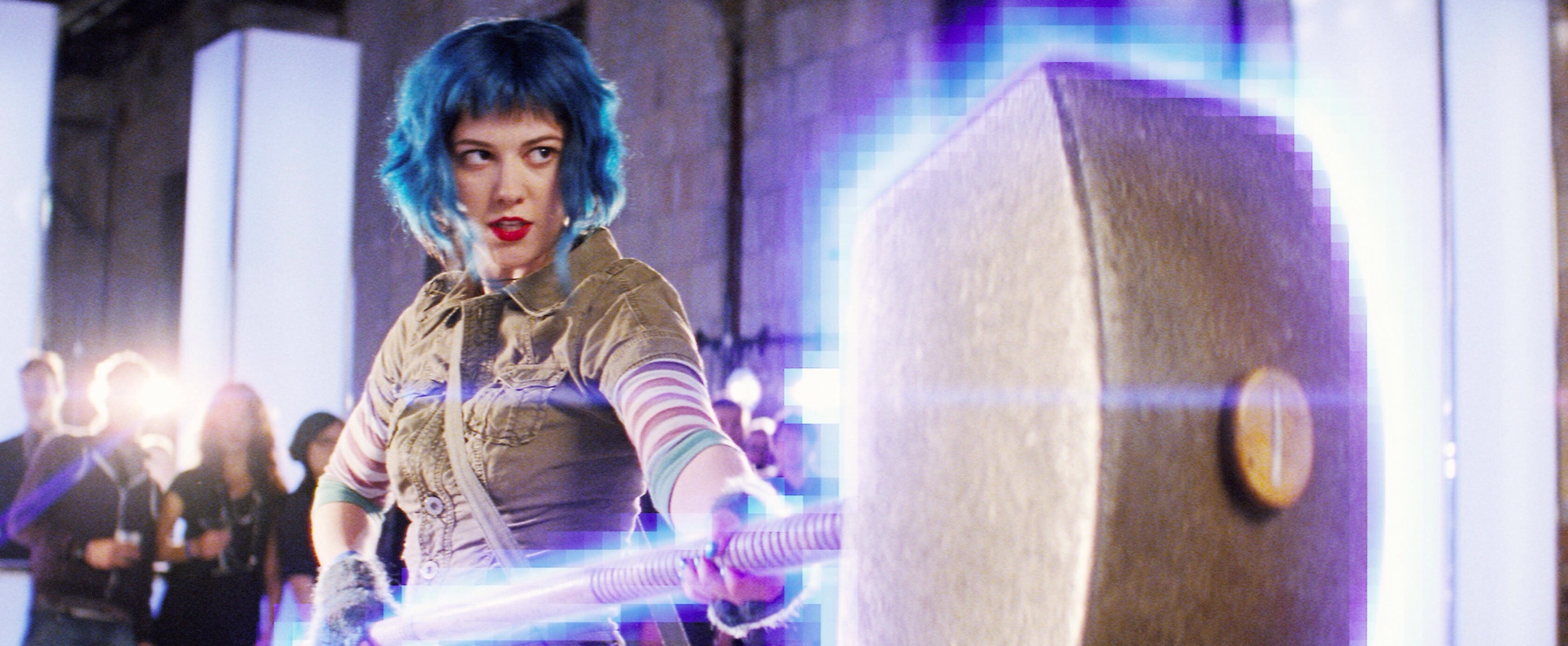 In an age where visual comedy has gone into an apparent hibernation, director Edgar Wright is dutifully and solitarily keeping the lights on in it’s cave. The best testament to Wright’s comedic skill is, by far, Scott Pilgrim vs. the World, a romantic, action-comedy romp like literally none other. Based on the popular graphic novel series by Bryan Lee O’Malley, Scott Pilgrim is the only comedy of recent memory where the camera itself is just as much a participant as any of the actors, the visual presentation in constant interaction with what’s occurring in the narrative. Mimicking the style of it’s comic book origin (as well as the video game tropes the comic itself was constantly referencing), Wright uses text pop-ups for the sake of humor in ways other filmmakers would never have even attempted, and the results are pitch-perfect. Rarely are comedies notable for their creative ambition, but Scott Pilgrim firmly establishes the value of the genre from an artistic standpoint. Wright is a craftsman, and jokes are his craft, which he works tirelessly to construct and perfect, refining them into the sharpest edge possible. It’s a comedy, a video-game movie and a comic book adaptation all at once, never under or overselling any of the many genres it juggles. The resulting mish-mash is unique and unforgettable, and instant cult classic whose recognition is well deserved.
In an age where visual comedy has gone into an apparent hibernation, director Edgar Wright is dutifully and solitarily keeping the lights on in it’s cave. The best testament to Wright’s comedic skill is, by far, Scott Pilgrim vs. the World, a romantic, action-comedy romp like literally none other. Based on the popular graphic novel series by Bryan Lee O’Malley, Scott Pilgrim is the only comedy of recent memory where the camera itself is just as much a participant as any of the actors, the visual presentation in constant interaction with what’s occurring in the narrative. Mimicking the style of it’s comic book origin (as well as the video game tropes the comic itself was constantly referencing), Wright uses text pop-ups for the sake of humor in ways other filmmakers would never have even attempted, and the results are pitch-perfect. Rarely are comedies notable for their creative ambition, but Scott Pilgrim firmly establishes the value of the genre from an artistic standpoint. Wright is a craftsman, and jokes are his craft, which he works tirelessly to construct and perfect, refining them into the sharpest edge possible. It’s a comedy, a video-game movie and a comic book adaptation all at once, never under or overselling any of the many genres it juggles. The resulting mish-mash is unique and unforgettable, and instant cult classic whose recognition is well deserved.
#4. The Hobbit (2012, 2013, 2014)
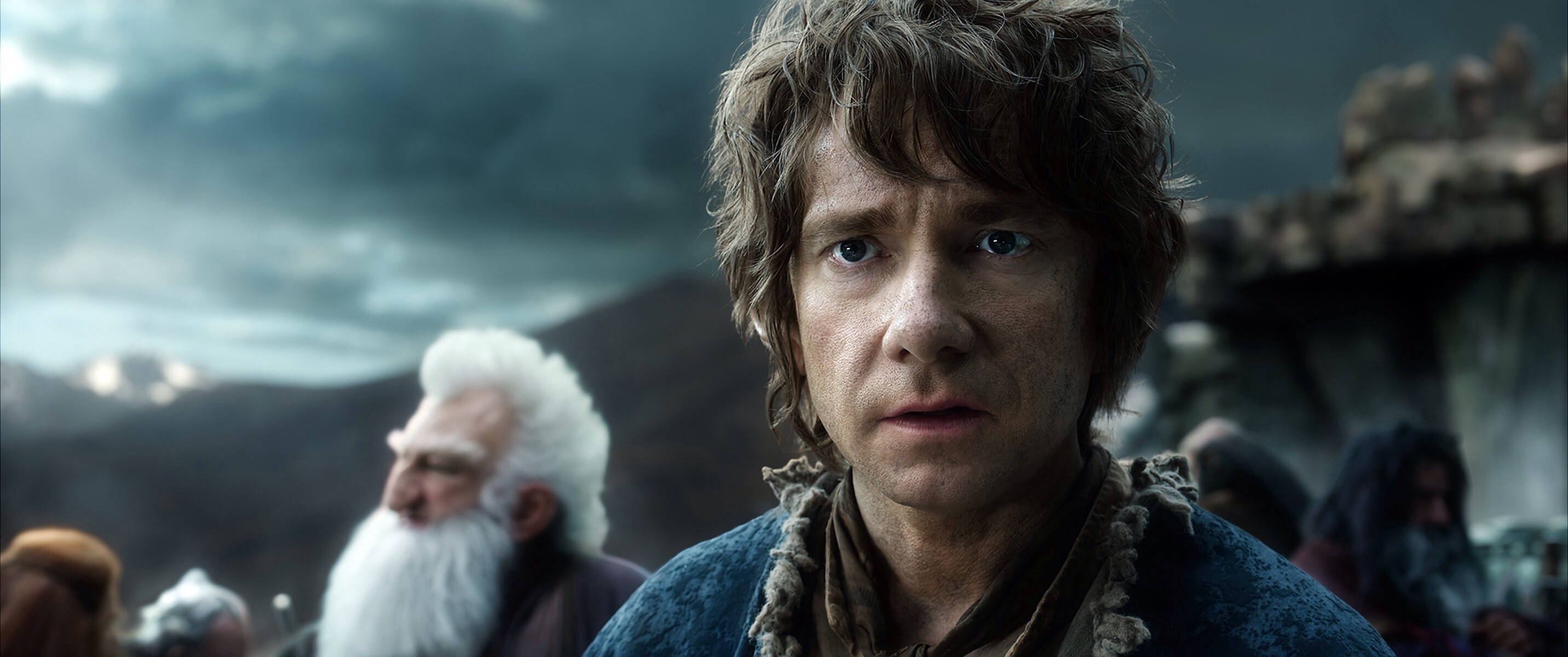 Peter Jackson’s three part, nine-hour, high fantasy epic had a lot going against it, namely returning to the relatively lightweight story of The Hobbit after already adapting the significantly weightier The Lord of the Rings trilogy. Making a cinematic follow up that is, in it’s essence, less than half as compelling as the “original” is more or less destined to disappoint more than a few people. But Jackson stuck to his guns, adapting The Hobbit as he wanted to see it (which is the only way to make any film, really), and in the process creating not only a worthy follow up to Rings but a stunning film and delightful adaptation in it’s own right. Opting to use the original 1937 novel as a framework rather than a blueprint, Jackson fleshed out and filled up the world of Middle Earth as it pertains to the journey of Bilbo, Thorin and Gandalf. He, along with his excellent writing team of Fran Walsh and Philippa Boyens, created a revised Hobbit that satisfies more completely and resonates more deeply than a straight adaptation of the book could ever provide. Though committed to narratively building into Rings, Jackson and his team use the lighter, more fantastical tone of the book to differentiate from the previous movie(s) and bring to life a more vibrant, fresh vision of Middle Earth. Utilizing top-of-the-line 3D, High Frame Rate technology and cutting edge CGI visual effects, Jackson and his team never shy away from using every tool at their disposal to show fans an entirely new side of the world that was realized so vividly back in Rings. Packed to the brim with adventures, bound to capture the imagination of the young audience members of generations to come, loyally recreating beloved scenes from the original book, culminating in one of the greatest (and possibly most technically impressive) battle sequence put onscreen, The Hobbit is a journey well worth taking. Which, despite it’s humongous action set pieces and grand, sweeping shots of New Zealand landscape, has a very personable and sincere heart at the center of it. The soul of J.R.R. Tolkien’s original text lives on in the cinematic Hobbit, which finally closes the door on the incredible film series that began fourteen years ago. Bringing full circle cinema’s greatest adventure, one that will endure for decades to come.
Peter Jackson’s three part, nine-hour, high fantasy epic had a lot going against it, namely returning to the relatively lightweight story of The Hobbit after already adapting the significantly weightier The Lord of the Rings trilogy. Making a cinematic follow up that is, in it’s essence, less than half as compelling as the “original” is more or less destined to disappoint more than a few people. But Jackson stuck to his guns, adapting The Hobbit as he wanted to see it (which is the only way to make any film, really), and in the process creating not only a worthy follow up to Rings but a stunning film and delightful adaptation in it’s own right. Opting to use the original 1937 novel as a framework rather than a blueprint, Jackson fleshed out and filled up the world of Middle Earth as it pertains to the journey of Bilbo, Thorin and Gandalf. He, along with his excellent writing team of Fran Walsh and Philippa Boyens, created a revised Hobbit that satisfies more completely and resonates more deeply than a straight adaptation of the book could ever provide. Though committed to narratively building into Rings, Jackson and his team use the lighter, more fantastical tone of the book to differentiate from the previous movie(s) and bring to life a more vibrant, fresh vision of Middle Earth. Utilizing top-of-the-line 3D, High Frame Rate technology and cutting edge CGI visual effects, Jackson and his team never shy away from using every tool at their disposal to show fans an entirely new side of the world that was realized so vividly back in Rings. Packed to the brim with adventures, bound to capture the imagination of the young audience members of generations to come, loyally recreating beloved scenes from the original book, culminating in one of the greatest (and possibly most technically impressive) battle sequence put onscreen, The Hobbit is a journey well worth taking. Which, despite it’s humongous action set pieces and grand, sweeping shots of New Zealand landscape, has a very personable and sincere heart at the center of it. The soul of J.R.R. Tolkien’s original text lives on in the cinematic Hobbit, which finally closes the door on the incredible film series that began fourteen years ago. Bringing full circle cinema’s greatest adventure, one that will endure for decades to come.
#3. Attack the Block (2011)
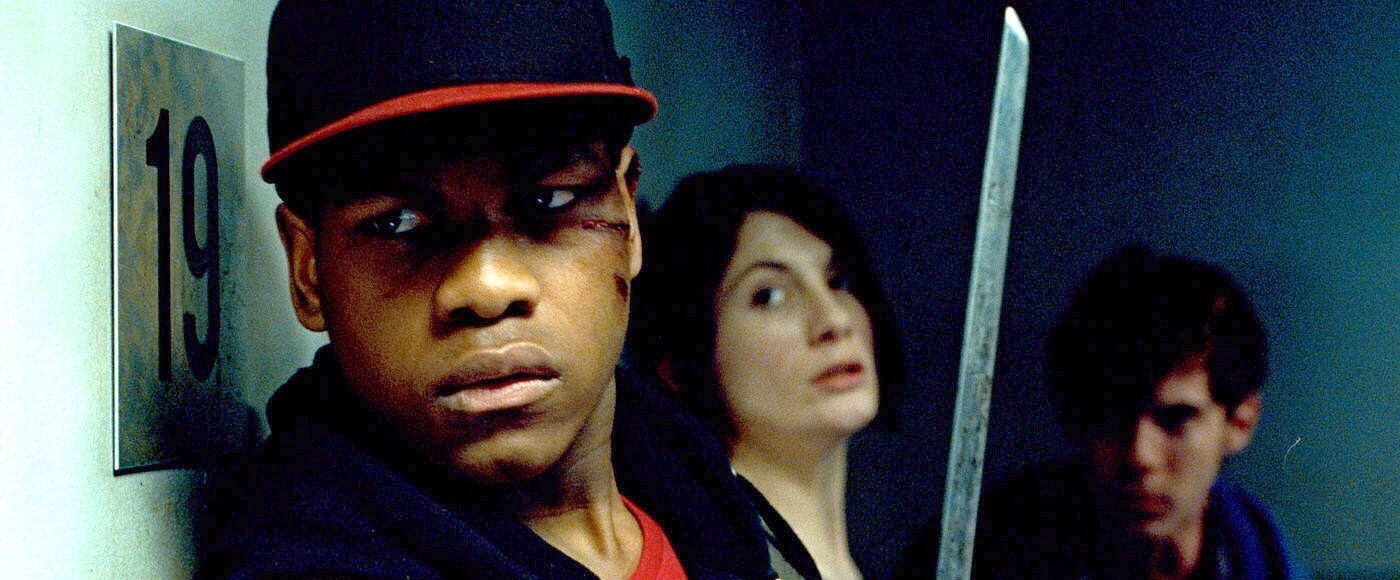 “Inner City vs. Outer Space” reads the tagline. Not a selling point that would suggest nearly as much nuance and pure creative inspiration as Attack the Block delivers on. A sort of mirror-image of the same year’s Super 8 (a good film in it’s own right), Attack the Block takes the familiar, almost Spielbergian set up of “kids make first contact with aliens”, but opts to replace the classic troupe of precocious white suburbanites with a cast of youths who would not traditionally be empathized with: predominantly black teens from low-income housing in south London. Oh, and they make their first appearance mugging somebody. By placing a consistently marginalized and demonized group of youngsters at the center of the story, writer/director Joe Cornish offers a challenge to his audience: how willing are you to extend empathy to those who would traditionally receive none? From there on out he slowly strips away audience presumptions about the protagonists, ultimately transforming them from misguided street kids to ass-kicking heroes. Subverting stereotypes and giving black and low-income youth a group of heroes they can see themselves in for the first time. But Attack the Block’s value also extends beyond any social statements it may make; it’s also just a rip-snorting, high tension, comedic monster flick. The best of it’s kind for years in either direction. In every manner it aspires to, Attack the Block succeeds. Nailing every dramatic, comedic and horror beat it sets its mind to. Cornish directs with the steady hand of a seasoned pro, while still delivering a thoroughly fresh, invigorating sci-fi horror classic. Like many of the best films this side of 2009, it offers an inspired take on an old concept, recontextualizing and, in the process, rediscovering what made these kinds of stories so fun and cool in the first place. So far as directorial debuts come, they really don’t get much better than Attack the Block.
“Inner City vs. Outer Space” reads the tagline. Not a selling point that would suggest nearly as much nuance and pure creative inspiration as Attack the Block delivers on. A sort of mirror-image of the same year’s Super 8 (a good film in it’s own right), Attack the Block takes the familiar, almost Spielbergian set up of “kids make first contact with aliens”, but opts to replace the classic troupe of precocious white suburbanites with a cast of youths who would not traditionally be empathized with: predominantly black teens from low-income housing in south London. Oh, and they make their first appearance mugging somebody. By placing a consistently marginalized and demonized group of youngsters at the center of the story, writer/director Joe Cornish offers a challenge to his audience: how willing are you to extend empathy to those who would traditionally receive none? From there on out he slowly strips away audience presumptions about the protagonists, ultimately transforming them from misguided street kids to ass-kicking heroes. Subverting stereotypes and giving black and low-income youth a group of heroes they can see themselves in for the first time. But Attack the Block’s value also extends beyond any social statements it may make; it’s also just a rip-snorting, high tension, comedic monster flick. The best of it’s kind for years in either direction. In every manner it aspires to, Attack the Block succeeds. Nailing every dramatic, comedic and horror beat it sets its mind to. Cornish directs with the steady hand of a seasoned pro, while still delivering a thoroughly fresh, invigorating sci-fi horror classic. Like many of the best films this side of 2009, it offers an inspired take on an old concept, recontextualizing and, in the process, rediscovering what made these kinds of stories so fun and cool in the first place. So far as directorial debuts come, they really don’t get much better than Attack the Block.
#2. Her (2013)
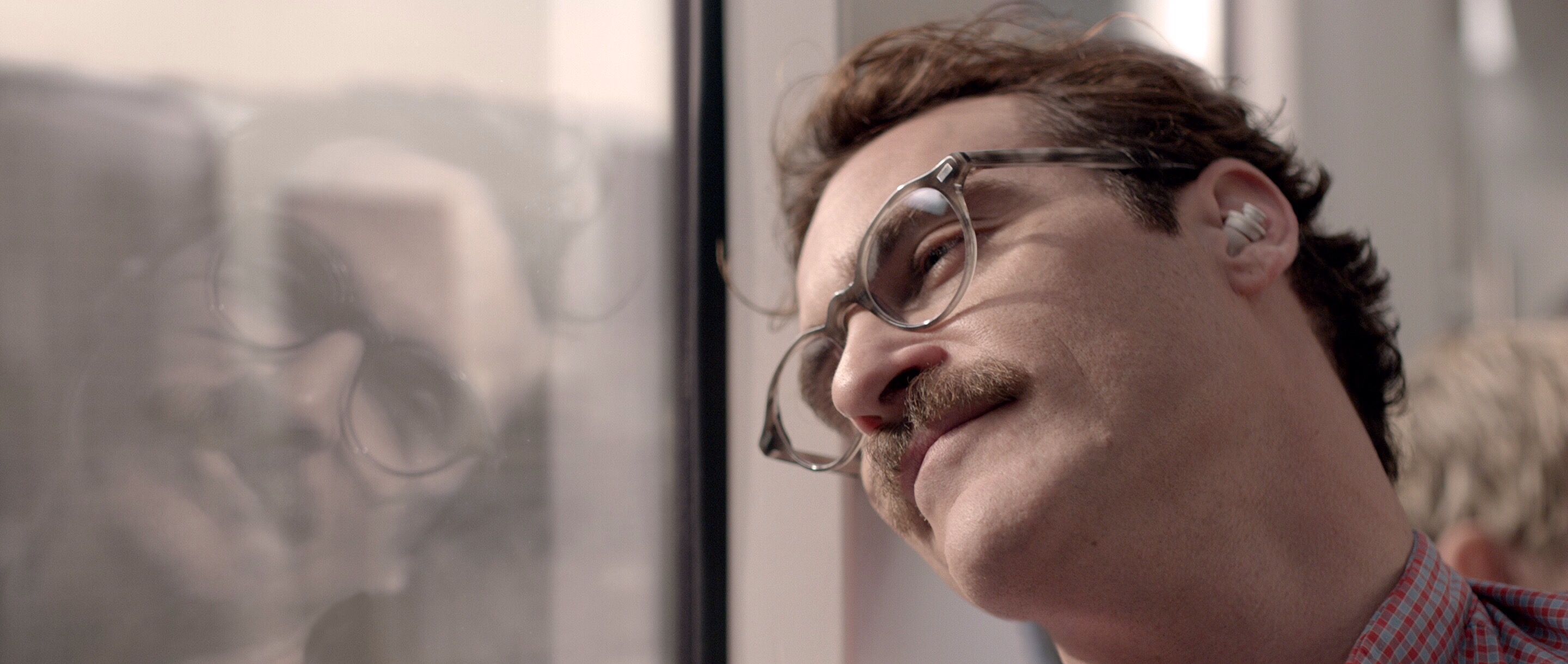 Spike Jonze’s Her could easily have been a very different movie. The idea of artificial intelligence has been toyed with endlessly in the past, robot people of all shapes and sizes have become par for the course in science fiction. But the approach that most regularly marks any film that focuses on AI as it’s subject is that of fear. The idea of a soulless intelligence, devoid of empathy or human feeling, driven by calculated ruthlessness, has been a source of fear in the movies for years as society watches technology bloom all around them. What makes Her different is not just it’s genuine, unjaded, unpresumptuous curiosity about the concept of a constructed person, but it’s unflinching mission to explore the subject on an intimate, personal level. In Spike Jonze’s world of the future, artificial intelligence aren’t to be feared, but rather to be fascinated with. To be engaged with. And, in the case of Her’s protagonist Theodore (Joaquin Phoenix), to fall in love with. Jonze wisely never attempts to make any sort of moralistic statement about falling in love with an AI, rather, he opts to simply explore all the possibilities that such an incredible scenario could create. What’s truly incredible about Jonze’s film is how genuinely warm and affectionate and sweet it is in it’s heart, despite dealing with technology, a subject traditionally understood as cold and impersonal. Not only does Jonze flip this presumption on it’s head, but he pulls from it the most insightful and romantic film of the decade, never shying away from engaging with and getting swept away in the wildly unconventional love of it’s leads. In many ways, Her is a fairly traditional story about love. The conflicts and speed bumps in the relationship between the Theodore and Samantha (Scarlett Johansson) ring surprisingly similar to that of human-to-human relationships, which is where Her finds it’s heart. The high concept is merely an avenue into exploring the universal experience of love, no matter what form it takes. The struggles that face Theodore and Samantha, though different from a traditional couple’s, still share the same universal roots that form the basis of all love between two flawed people. It’s all at once incredibly different and high-concept, yet also instantly understandable and relatable. A love story for the post-technoparanoid age, and a wonderfully affectionate portrait of the experience of love from the entirely unique lens of Spike Jonze.
Spike Jonze’s Her could easily have been a very different movie. The idea of artificial intelligence has been toyed with endlessly in the past, robot people of all shapes and sizes have become par for the course in science fiction. But the approach that most regularly marks any film that focuses on AI as it’s subject is that of fear. The idea of a soulless intelligence, devoid of empathy or human feeling, driven by calculated ruthlessness, has been a source of fear in the movies for years as society watches technology bloom all around them. What makes Her different is not just it’s genuine, unjaded, unpresumptuous curiosity about the concept of a constructed person, but it’s unflinching mission to explore the subject on an intimate, personal level. In Spike Jonze’s world of the future, artificial intelligence aren’t to be feared, but rather to be fascinated with. To be engaged with. And, in the case of Her’s protagonist Theodore (Joaquin Phoenix), to fall in love with. Jonze wisely never attempts to make any sort of moralistic statement about falling in love with an AI, rather, he opts to simply explore all the possibilities that such an incredible scenario could create. What’s truly incredible about Jonze’s film is how genuinely warm and affectionate and sweet it is in it’s heart, despite dealing with technology, a subject traditionally understood as cold and impersonal. Not only does Jonze flip this presumption on it’s head, but he pulls from it the most insightful and romantic film of the decade, never shying away from engaging with and getting swept away in the wildly unconventional love of it’s leads. In many ways, Her is a fairly traditional story about love. The conflicts and speed bumps in the relationship between the Theodore and Samantha (Scarlett Johansson) ring surprisingly similar to that of human-to-human relationships, which is where Her finds it’s heart. The high concept is merely an avenue into exploring the universal experience of love, no matter what form it takes. The struggles that face Theodore and Samantha, though different from a traditional couple’s, still share the same universal roots that form the basis of all love between two flawed people. It’s all at once incredibly different and high-concept, yet also instantly understandable and relatable. A love story for the post-technoparanoid age, and a wonderfully affectionate portrait of the experience of love from the entirely unique lens of Spike Jonze.
#1. Beasts of the Southern Wild (2012)
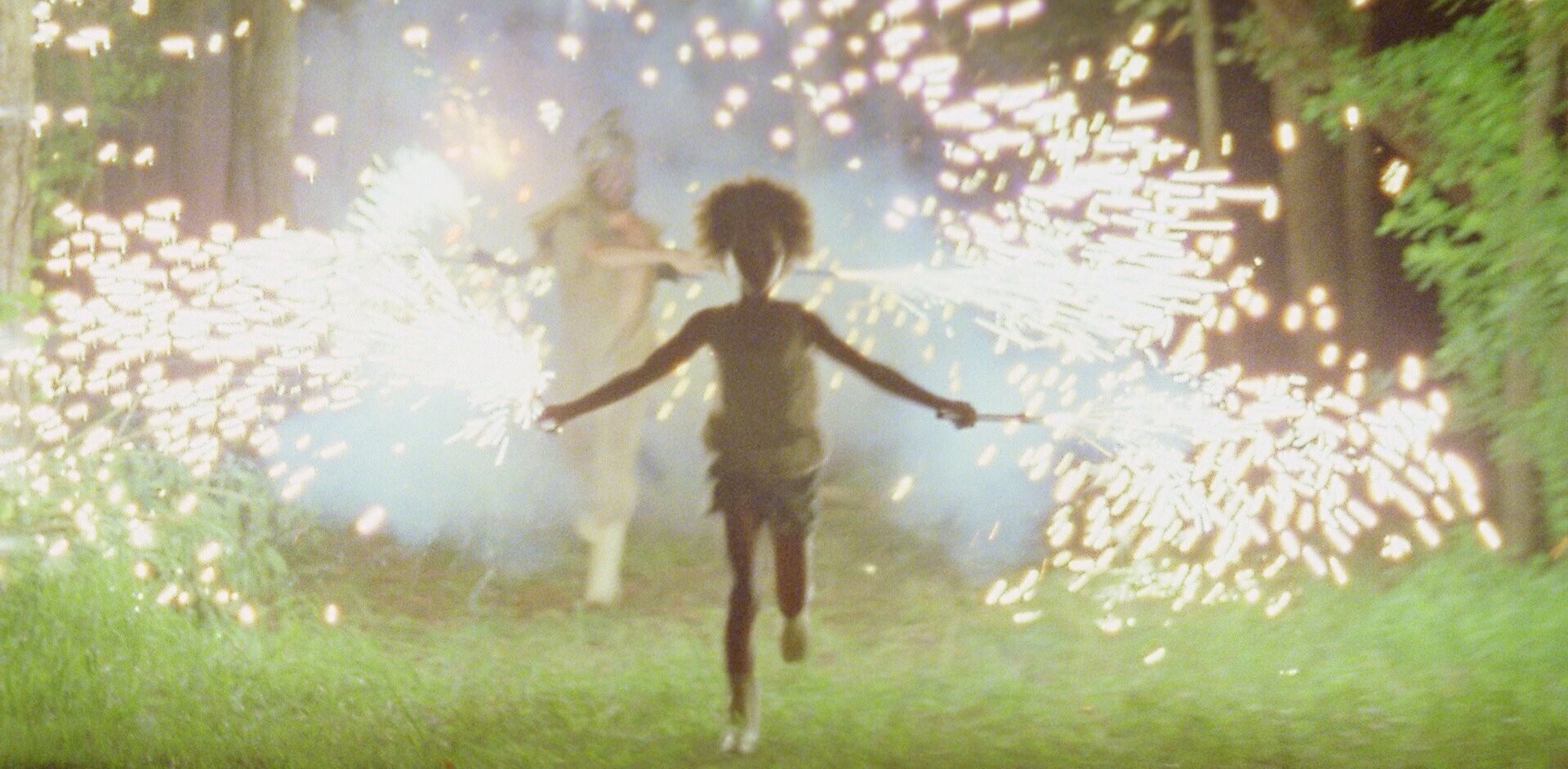 Every once in awhile a film just enraptures you. It brings you deep into its world and envelops you. Where you’re so in tuned with the heart and soul of the picture that when it ends you feel like you’ve been somewhere entirely different. It transports you. It’s the ultimate power of cinema in a nutshell. For myself, that film was Beasts of the Southern Wild. The debut film of director Benh Zeitlin, Beasts is a modern, cinematic folktale. A fantastical fable and a modern-day social drama all at once. It rests where all folktales lie, at the bridge between the real world and the fantasy one, where the line between the two is blurred and hazy, but the “reality” of the story hardly matters at all. It’s in folktales that we experience the soul of a culture, of a time, of a feeling, bottled within a little story. Beasts tells the story of a little girl named Hushpuppy (Quvenzhané Wallis) who lives out in the Bayou with her father Wink (Dwight Henry) in a makeshift swamp town called “The Bathtub”. At its center, Beasts is the tale of a young girl wrestling with the concept of death and the impermanence of life as her world starts to fall down around her in ways both “real” and (possibly) imagined. It’s an emotional journey all must take on their way to adulthood, and seldom has a film captured it so effectively as Beasts. Though death may be its central theme, it is not a sad film. On the contrary, Beasts is most memorably characterized by its joy in the face of potential grief and despair. It has a spark of life and hope in it’s heart that outshines every other film around it, and it extends to every element of the production. Colorful flickers of hazy light constantly dance across the screen. The strings and music box bells of Dan Romer’s score color and texture each moment. The images constructed by Zeitlin and cinematographer Ben Richardson paint the filmic equivalent of a lullaby, a perfect feeling of an incoming summer night. To call the film beautiful is an understatement, it is a product of a deep, abiding love in each and every respect. Every frame, every moment, a tonal masterpiece, striking the perfect pitch scene after scene. It perfectly captures an overwhelmingly potent sense of place and time, to be a child in a world of uncertainties, but a world that is still beautiful and magical at every turn.
Every once in awhile a film just enraptures you. It brings you deep into its world and envelops you. Where you’re so in tuned with the heart and soul of the picture that when it ends you feel like you’ve been somewhere entirely different. It transports you. It’s the ultimate power of cinema in a nutshell. For myself, that film was Beasts of the Southern Wild. The debut film of director Benh Zeitlin, Beasts is a modern, cinematic folktale. A fantastical fable and a modern-day social drama all at once. It rests where all folktales lie, at the bridge between the real world and the fantasy one, where the line between the two is blurred and hazy, but the “reality” of the story hardly matters at all. It’s in folktales that we experience the soul of a culture, of a time, of a feeling, bottled within a little story. Beasts tells the story of a little girl named Hushpuppy (Quvenzhané Wallis) who lives out in the Bayou with her father Wink (Dwight Henry) in a makeshift swamp town called “The Bathtub”. At its center, Beasts is the tale of a young girl wrestling with the concept of death and the impermanence of life as her world starts to fall down around her in ways both “real” and (possibly) imagined. It’s an emotional journey all must take on their way to adulthood, and seldom has a film captured it so effectively as Beasts. Though death may be its central theme, it is not a sad film. On the contrary, Beasts is most memorably characterized by its joy in the face of potential grief and despair. It has a spark of life and hope in it’s heart that outshines every other film around it, and it extends to every element of the production. Colorful flickers of hazy light constantly dance across the screen. The strings and music box bells of Dan Romer’s score color and texture each moment. The images constructed by Zeitlin and cinematographer Ben Richardson paint the filmic equivalent of a lullaby, a perfect feeling of an incoming summer night. To call the film beautiful is an understatement, it is a product of a deep, abiding love in each and every respect. Every frame, every moment, a tonal masterpiece, striking the perfect pitch scene after scene. It perfectly captures an overwhelmingly potent sense of place and time, to be a child in a world of uncertainties, but a world that is still beautiful and magical at every turn.
Andrew Allen is a television and film writer for Action A Go Go. He is an aspiring screenwriter and director who is currently studying at the University of Miami. You can check him out on Tumblr @andrewballen and follow him on Twitter @A_B_Allen.
The views and commentaries expressed on these pages are solely those of their authors and are not necessarily either shared or endorsed by ActionAGoGo.com.

